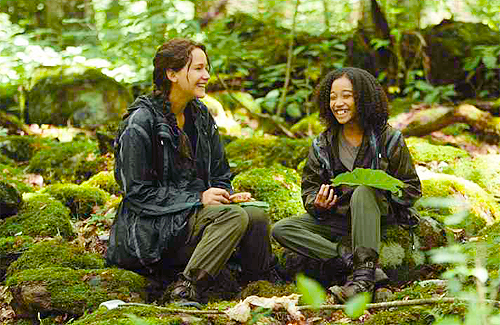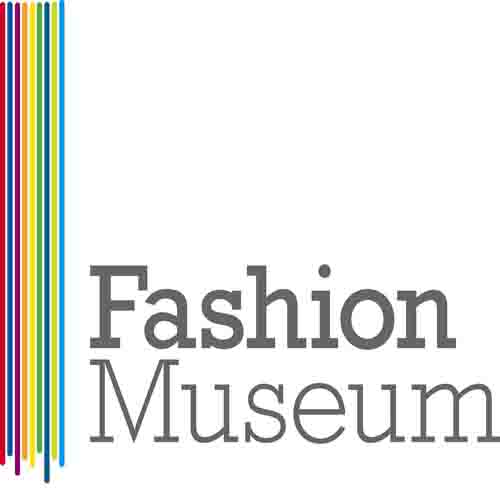I have been meaning to do this post for a few weeks now, I even tweeted about it after I watched it at the cinema but alas, other commitments have gotten in the way. It goes without saying, well, for anybody who has seen the first installment of The Hunger Games that the costumes are fantastic. Even if some of them aren’t completely accurate to the book, costume designer Judianna Makovsky did an excellent job. She was influenced a lot by designers including Alexander McQueen, John Galliano and Schiaparelli as well as the Elizabethan period which are all noticeable throughout the film.
For anybody who is not familiar with the plot, this is The Hunger Games in a nutshell through the words of director Gary Ross:
“In a dystopian future America [now called Panem], a nation made up of twelve impoverished districts, all ruled by a militant capitol where technology and excess are a way of life. Every year the capitol holds a televised battle royal, where one male and female teenager from the twelve districts must battle to the death for the pleasure of capitol. When a young hunter from District 12 named Katniss Everdeen sacrifices herself to save her little sister from the games, she embarks on a brave fight for survival that could change a nation.”
Heroine Katniss (Jennifer Lawrence) is shown at the start of the film wearing the above dress which is known as her ‘reaping dress’ in which Makovsky took the description from the book to create it. The dress has a very vintage feel due to the 1930s to 1950s influence and the fact that they wanted it to look like something that could have been a hand-me-down from her mother. Makovsky found some vintage fabric and dyed it until it was the perfect colour giving the dress a very simple and elegant look. All of the costumes in district 12 are supposed to look like hand-me-downs or workwear and therefore most are hand-made or rented from vintage sources. The amount of extras in the film was high and therefore at least 1,800 costumes were used throughout the film.
This dress is one of the most memorable costume moments in the film due to it showing Katniss in a completely new light. The dress is showing how she has transformed but not in the sense that the dress has transformed her, but how she has transformed as a person. It’s a moment, if not the only moment where viewers stop and think she is beautiful. The dress is coral-red with several layers of ombre fabric, pleating detail at the bottom and Swarovski crystals scattered all over it. Makovsky wanted the dress to be simpler than the description in the book, not as sparkly but more elegant and subltle with the flames at the bottom of the dress only visible when she twirls around. Caeser (Stanley Tucci) the talk show host has striking blue hair and therefore his costumes are typical of a talk show host, they stand out but isn’t overly outlandish as the blue hair says everything it needs to about him.
Effie Trinket (Elizabeth Banks) sports some rather outrageous outfits throughout the film, especially when we first meet her at the start, wearing the above pink ensemble – she could give Dolores Umbridge a run for her money. Again, staying true to the book despite some slight alterations, Effie is noticeably eccentric in the way she presents herself. It’s not to the point in which it looks overly cartoon-like but comical in the way that she has a vicious streak yet is dressed in ruffles and florals. Makovsky aimed for Effie’s outfits to be the colours in which they were described in the book but chose certain shades in order for it to look slightly classic and tasteful.
Due to the location in North Carolina, it was difficult to figure out how to make the costumes so that they could be worn while shooting in 100 degree weather with humidity. The matching parade costumes in the above image were skin-tight which would prove uncomfortable in the heat and therefore were made into two pieces so they could get in and out of them as easily and quickly as possible. Here, Katniss is wearing her ‘girl on fire’ costume which many people think is leather but it’s actually a novelty stretch fabric with embossed plastic on top and stretch patent leather. The costume was created by Makovsky’s co-worker from the costume department of X-Men who has a lot of experience in creating striking costumes.
Haymitch (Woody Harrelson) plays an alcoholic and a previous winner of The Hunger Games, therefore has a lot of money which needed to me shown through his costume. He has an Edwardian cut to his clothes and puts on a front which confuses the viewers into understanding who he really is, despite the obvious referrals to his relationship with alcohol. He is a stylish alcoholic.
In the book everyone involved in The Hunger Games, all members of all districts wear completely the same outfit but due to the transfer to screen, it would be hard to distinguish each character. All of those taking part wore the same trousers but had different coloured jackets to tell them apart but it proved difficult to find appropriate colours that looked good on screen due to the location in the woods. Despite this, earthy colours were used which blend in with the background to the characters advantage but also distinguish each district subtly enough for it to not be an extreme difference from the book itself.
What do you think of the costumes in The Hunger Games? Are you a fan of the books?















